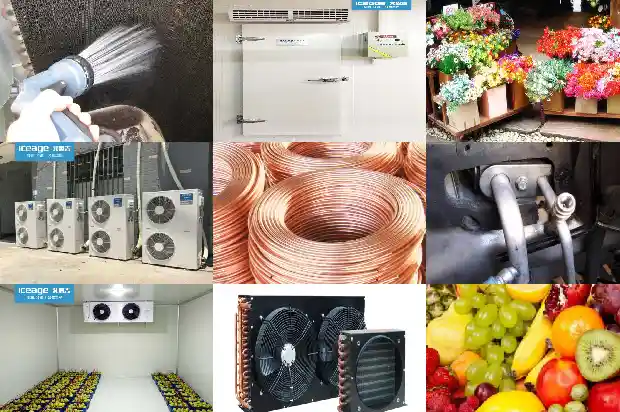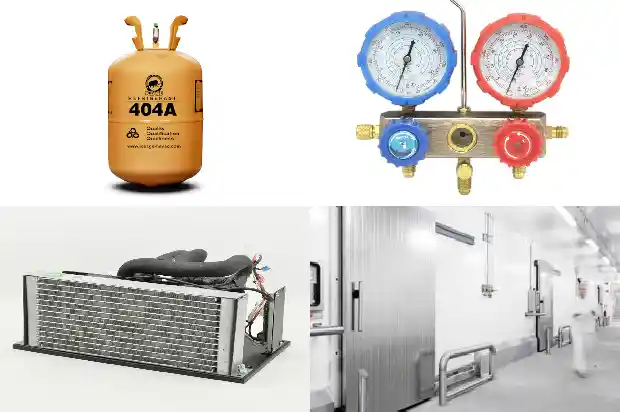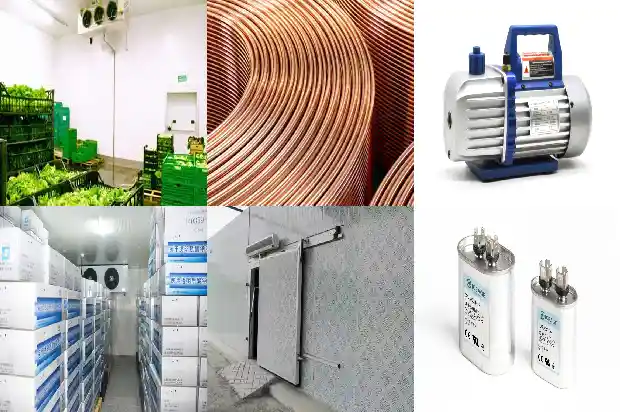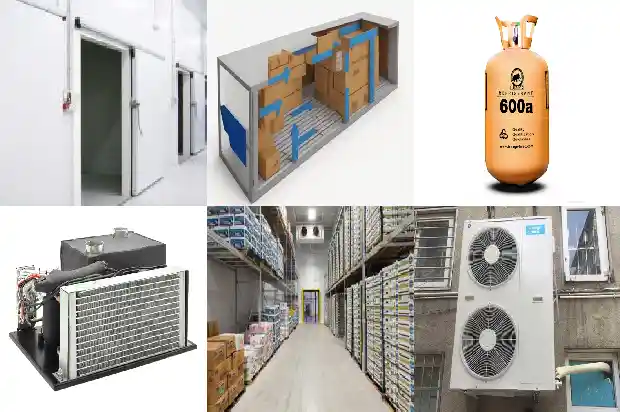Installation and Welding of Precision Air Conditioning Systems
2025-03-05
I. Installation of Refrigeration Pipeline
Overview of the Installation of Refrigeration Pipeline
The quality of the installation of the refrigeration pipeline directly affects the power of the air conditioning unit, the operation failure rate, the service life of the compressor, etc. Therefore, the installation work of refrigeration equipment, refrigeration pipelines, etc. must comply with the requirements of refrigeration technology and should be carried out by skilled and professional personnel. When the outdoor condenser is installed lower than the indoor unit, the pipeline drop between the condenser and the indoor unit must be maintained within 3m. All refrigeration pipelines must be connected with standard special straight copper pipes for refrigeration.
Overview of the Installation of Refrigeration Pipeline
The quality of the installation of the refrigeration pipeline directly affects the power of the air conditioning unit, the operation failure rate, the service life of the compressor, etc. Therefore, the installation work of refrigeration equipment, refrigeration pipelines, etc. must comply with the requirements of refrigeration technology and should be carried out by skilled and professional personnel. When the outdoor condenser is installed lower than the indoor unit, the pipeline drop between the condenser and the indoor unit must be maintained within 3m. All refrigeration pipelines must be connected with standard special straight copper pipes for refrigeration.
- The installation of the refrigeration pipeline should design appropriate pipeline dimensions according to the cooling capacity of the air conditioning unit, the distance between the indoor and outdoor areas, etc. When designing the pipeline route between the air conditioning unit and the outdoor condenser, the route with the shortest distance and the fewest bends should be selected.
- Pipeline connection fittings such as elbows will generate pressure drops, which will affect the efficiency of the unit. They should be avoided as much as possible. If it is unavoidable, the bend connection fittings at a 45-degree angle should be used as much as possible.
And convert the corresponding pressure drop into the actual pipeline length.
- The total length of the pipeline should be maintained within 30m. For the hot gas pipeline vertically upward, an oil trap should be installed every 4m. When the height exceeds 25m, an oil separator should be installed at this position of the vertical pipe of the hot gas pipeline, and an oil trap should also be installed.
- To avoid the situation of liquid accumulation in the installation from the condenser downward, a check valve should be installed at the upward position on the liquid discharge pipe at the outlet of the condenser.
The hot gas pipeline with a horizontal route should be inclined towards the condenser to reduce the backflow of oil and the condensed refrigerant when the compressor stops operating.
- The pipeline should be fixed to the wall or the ground with pipeline clamps, and the distance between the pipeline clamps should be maintained between 1m and 2m. To avoid the pipeline from being damaged and leaking due to friction caused by vibration, the pipeline clamps should be treated with rubber for shock absorption.
Bottom of the Oil Trap: When the outdoor unit is within 3m higher than the indoor unit, an oil trap needs to be installed at the bottom of the copper pipe.
Middle Part: When the outdoor unit is more than 4m higher than the indoor unit, an oil trap needs to be installed in the middle part of the copper pipe every 4 meters, and the oil trap at the bottom must also be installed.
II. Welding and Leak Detection of Refrigeration Copper Pipes
The copper pipes are welded using the hard soldering process.
Refer to the relevant welding process flow. Before welding the copper pipes, conduct a safety inspection of the gas cylinder, welding torch, pressure reducing valve, check valve, and gas pipe.
Adjust the pressure of the gas cylinder. The pressure of oxygen is 0.15-0.2MPa, and the pressure of acetylene is 0.01-0.02MPa. The flame is a neutral flame. When welding the pipeline, it must be welded under the protection of nitrogen; use special silver solder; connect the copper pipes using the socket connection of the connection fittings; components near the weld joint that are easy to be damaged by heat need to be cooled down; the welded part should be flat and beautiful, without gaps, cracks, pores, and leakage. - Before welding, the inner and outer surfaces of the copper pipes must be checked to see if they are clean and complete. If dirt is found inside the copper pipes, use a clean silk cloth or nitrogen to clean the dirt thoroughly before use.
- The copper pipes must be cut with a cutting knife. Note that do not use a hacksaw to cut the copper pipes, because cutting the copper pipes with a hacksaw will produce copper and iron filings. They will enter the copper pipes and cannot be completely cleaned, and will enter the compressor along with the operation of Freon, causing serious damage to the compressor.
- When welding the pipeline, the method of blowing nitrogen must be adopted to prevent the formation of an oxide layer during welding. If there is a lack of nitrogen supply on site, the method of immersing in water can be used to remove the oxide layer, but the moisture must be dried completely before the pipes can be butted.
- The surface of the copper pipes after welding should be kept flat and beautiful, without gaps, cracks, pores, and leakage. The connections between the copper pipes should use connection fittings of the same material and size. Do not use the method of pipe butt joint for connection.
- If there are components near the weld joint that are easy to be damaged by heat (such as needle valves, valve sealing rubbers, etc.), cooling treatment should be carried out. For example, remove the valve core, or wrap the component with a wet towel, add water for cooling while welding, and reset it after the surface temperature of the component returns to room temperature.
- After the pipeline welding is completed, check whether the weld joint is complete. If cracks, pores, or leakage are found, repair them immediately. After welding is completed, seal the pipeline with thermal insulation materials.
Pipeline Pressure Leak Detection - Pipeline Pressure Test: Start with 0.5MPa, and after stabilizing the pressure for 10 minutes without leakage, a constant pressure holding test at 2.2MPa can be carried out. The pressure holding time is 24-48 hours. When the temperature changes within the range of 3-6°C, the pressure change is about 1%. The pressure change within 24 hours shall not exceed 0.02MPa.
- The constant pressure test of the pipeline must use nitrogen, and oxygen or other gases must not be used. Since the pressure of Freon R22 will change with the change of the ambient temperature, using Freon R22 for the pressure holding test cannot reflect whether the system is sealed, and this method should be avoided.
Vacuum Pumping of the System
Vacuum pumping: For a pipeline length within 15m, pump for 1 hour; for a pipeline length within 30m, pump for 2 hours. For the secondary vacuum pumping method, if the vacuum degree of the vacuum pump cannot reach 50HMG, R22 gas should be injected into the pipeline to a pressure above the equilibrium pressure, and then vacuum pumping should be carried out again after maintaining it for 10-15 minutes.
After the pipeline is vacuum pumped, it should not be left in a vacuum state for a long time, and it should be injected to a pressure above the positive pressure.
Related Articles
- Comprehensive! Piping and Installation of VRF (Variable Refrigerant Flow) System
- What Issues Should Be Considered in the Installation of a Cold Storage?
- Installation, Inspection and Debugging of the Cold Storage Body
- Installation Precautions and Accessory Selection for Cold Storage Unit
- Matters Concerning the Installation of Parallel Units
- Advanced Guide! Design and Installation of Refrigeration System Pipelines
- What Are the Acceptance Standards for Cold Storage Design and Installation?
- What issues should be noted during the installation of a small - scale cold storage?
- Instructions for Welding and Drainage in the Installation of Refrigeration Equipment Pipelines
- What is the Correct Operation Method of the Distribution Box during Cold Storage Installation?
- What Issues Should Be Noted in Cold Storage Installation and Construction?
- What Special Requirements are There for the Installation of Tea Cold Storage?
- Operating Principle and Standard Installation Steps of Multi - split Systems in Refrigerant Air - conditioning Systems
- How to Identify the Quality of Refrigeration Equipment Installation Materials?
- How to Identify Installation Materials for Refrigeration Equipment
- Knowledge, Installation and Maintenance of Cold Storage Systems
- Precautions for the Installation and Use of Water Flow Switches
- What safety measures should be paid attention to during the installation of cold storage?
